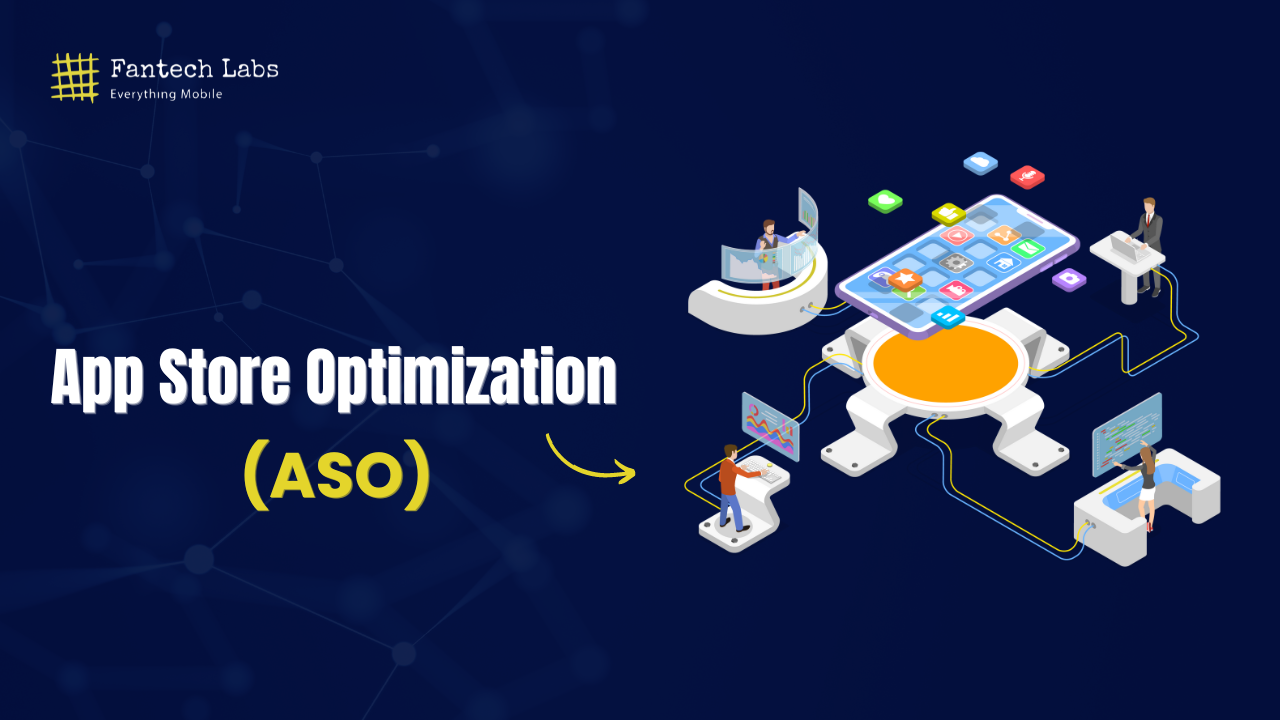A mobile app can improve user engagement, revenue generation, and brand recognition. In the app stores, millions of other apps are attempting to accomplish the same thing, though. You must take distinctive steps to distinguish your application from the competition and attract the type of users you want to download it. The proper solution is app store optimization.

- App Store Optimization: What Is It?
- What separates SEO from ASO?
- Why is App Store Optimization Important for App Growth?
- ASO across Various App Stores
- Essential Elements of an App Store Optimization:
- ASO’s Effect on App Success:
- Steps for App Store Optimisation:
App Store Optimization: What Is It?
App Store Optimisation (ASO) is the process of raising an app’s conversion rates to increase downloads while also enhancing the app’s user attractiveness and visibility in app stores. However, it can also draw in reviews and criticism, boost user engagement, and raise company exposure.ASO can also be known as app search optimisation, app store SEO, or ASO marketing. The most well-known app stores are the Google Play Store for Android and the App Store for iOS.
Apart from achieving a high ranking in the app store search results, ASO prioritizes click-through rate or CTR. To optimize for a high CTR, you must convince visitors to click on your app store listing once they have found it. App screenshots, app ratings, app names, app titles, and app icons are all common components of CTR optimization.
Google Play and the Apple App Store are the two main app shops. But ASO can also be found in other app stores, such as Amazon Appstore, Samsung Galaxy Store, and Huawei App Gallery.

We provide all the advice and techniques you require to be successful with app store optimization in this comprehensive and in-depth guide. This page has all the knowledge you need to start rating your app higher in app stores, whether you are new to app stores or are not familiar with ASO.
What separates SEO from ASO?
App Store SEO (Search Engine Optimisation) is another term for ASO. Keyword optimization, backlinking, and conversion optimization are among the fields where the two processes are similar. The ranking factors are the primary means where search engine optimization and app store optimization differ from one another. ASO is used to optimize mobile apps for their appearance in app stores, whereas SEO is used to improve websites for search engines like Google.
There are hundreds of ranking criteria in Google Search, each with a different ranking weight. For ASO, the number of ranking variables is far shorter, and we can identify those characteristics with confidence.
The primary distinctions and overlaps between ASO and SEO are shown in the checklist that follows.
Why is App Store Optimization Important for App Growth?
By the end of the first quarter of 2022, 3.3 million apps were available in the Google Play Store, according to Statista. According to the same source, within the same time frame, there were more than 2.1 million apps available in Apple’s App Store. It’s getting harder and harder to score well on apps with over 5.4 million listed in the two biggest app stores.
App store optimization (ASO) is critical because it allows you to manage your app’s exposure and discoverability in crowded app stores. Approximately 82 percent of users find apps through app stores via browsing or by following the shops’ suggestions. However, it’s challenging to get visible and get noticed among the more than 5 million apps available on Google Play and the Apple App Store combined.
If your app isn’t optimized for the app store, its visibility and ranking are determined by the search engine and purely by chance.
ASO across Various App Stores
App stores differ in terms of the fields that are available, the variables that determine rankings, and the significance of each.
Therefore, while optimizing for various stores, it’s critical to know which things to focus on.
The majority of users access the Apple App Store and Google Play, despite the expanding number of app stores. Therefore, we’ve listed the two’s distinctions below.
Google Play vs. Apple AppStore
Even while the Google Play Store and the Apple App Store are comparable, there are a few significant distinctions that will impact your ASO efforts.
Before an app is released in the app stores, it must first be evaluated and approved on both platforms.
App clearance times vary, ranging from a few hours to many weeks, based on the application’s complexity and size. If you have a specific date in mind for the launch or update of your app, think about submitting it at least one week beforehand.
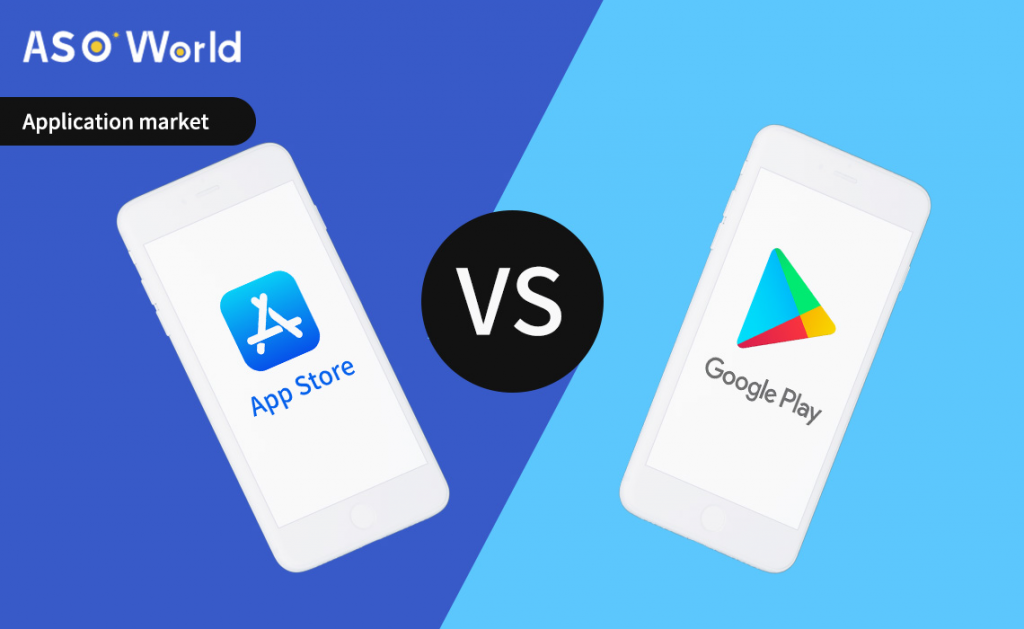
Furthermore, the App Store offers two exclusive features that Google Play does not: the subtitle and the keywords box. On the other hand, Apple does not give a brief description field like Google Play does. The criteria that the platforms employ to rank and highlight apps are another area where they diverge:
Factors Affecting Apple App Store Ranking
The following are the main criteria used by the Apple App Store to rank iOS apps:
- App name
- App subtitle
- App URL
- Keywords
- Installs and engagement
- Reviews and ratings
- App updates
- In-app purchase titles and descriptions
Factors Affect Google Play Store Ranking
The ranking criteria that Google Play gives priority to are as follows:
- App title
- App short description
- App long description
- Instals and engagement
- Reviews and ratings
- In-app purchase titles and descriptions
- App updates
Essential Elements of an App Store Optimization:
ASO Research on Keywords
The process of finding, gathering, and evaluating keywords that are relevant to your app and have the potential to increase its visibility is known as ASO keyword research.
Any effective ASO plan starts with keyword research. This is a result of app store search algorithms presenting customers with apps that most closely match the phrases they submit.
Therefore, you should and can use keywords in all of the fields that the app stores offer. include descriptions, URLs, and app names.arch
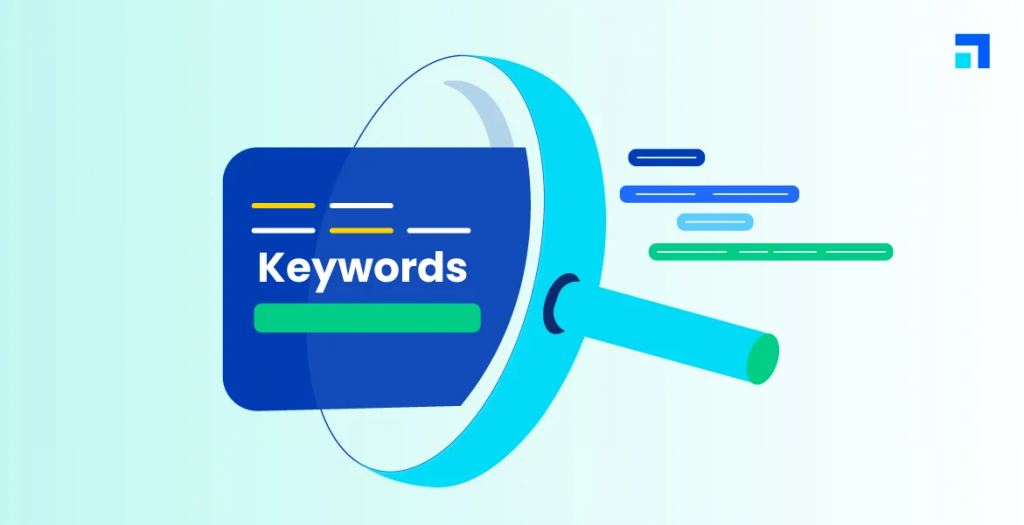
How to Research Keywords for App Store Optimization
First, List the terms or phrases that best describe your app and its features in order to do ASO keyword research.
Next, input these terms and expressions into the Keyword Magic Tool to obtain keyword suggestions along with data on search volumes and level of competition.
Despite being unique to Google web searches, these terms might give a good idea of what people are searching for.
It is beneficial, to begin with, for general phrases that characterize your application. Then, to get more profitable keyword ideas, utilize the “Broad Match” option.
Optimizing Keywords:
Choosing the appropriate keywords is crucial for App Store Optimization, much like it is for search engine optimization (SEO). Try picking popular keywords that are pertinent to the features of your app.Make sure that the title, description, and metadata of your app naturally contain these keywords to improve its discoverability in searches.
Catchy App Icon and Title:
The title and icon of your app are what consumers see first. Create a catchy title that effectively conveys the essence of your application. The emblem should not only reflect your business but also be visually striking and captivating enough to entice clicks.
Improved Description of the App:
Showcase the strengths and advantages of your application in the description. Communicate the application’s value proposition, salient features, and benefits understandably. Use simple language and bullet points to make it easier to scan.
Mesmerizing Screenshots and Videos:
Videos and pictures are powerful visual aids that can persuade people to download your app. Use eye-catching graphics to draw attention to the most desirable and distinctive aspects and provide prospective customers with an idea of what to expect.
User Evaluations and Stars:
Positive feedback and high ratings persuade potential customers to put their trust in you. Urge happy customers to write reviews, address complaints and demonstrate your dedication to making the product better by quickly responding to user input.
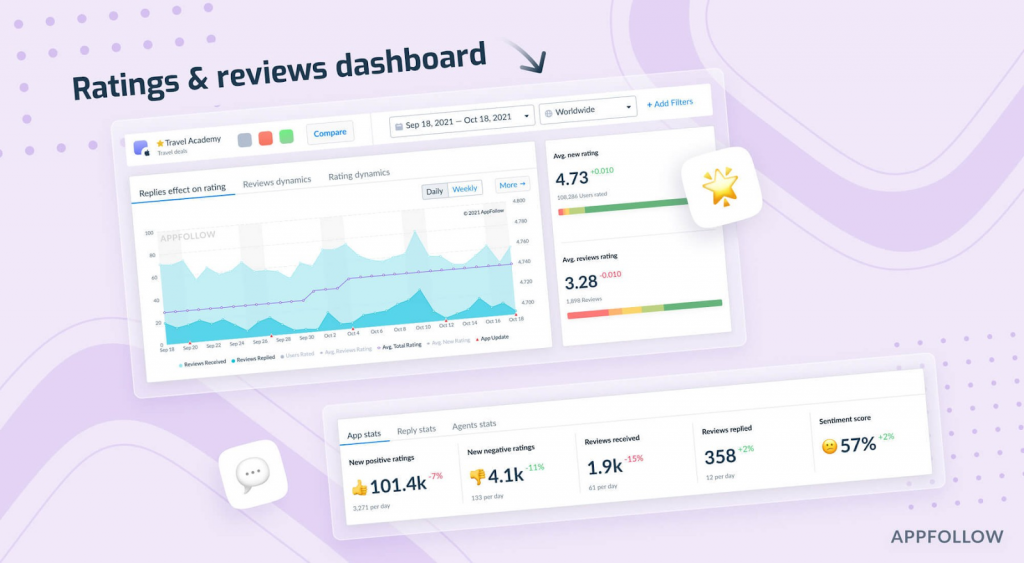
Continual Updates:
The app stores give preference to regularly updated and maintained apps. Update your application frequently to include new features, fix bugs, and enhance functionality. This not only makes current users delighted, but it also tells the app store’s algorithms that your product is worthwhile and relevant.
Localization:
Think about how your target audience differs linguistically and culturally. Localizing your app can greatly improve its accessibility and appeal in particular areas. This includes localizing the title, description, and images of the app.
ASO’s Effect on App Success:
Enhanced Visibility
By guaranteeing that your app shows up in pertinent search results, effective app store optimization raises your app’s exposure to potential consumers who are actively looking for apps much like yours.
Higher Organic Downloads:
You may increase the possibility that users will find and download your app on their own by optimizing it for relevant keywords and making general presentation improvements.
Inexpensive User Acquisition:
When it comes to user acquisition, ASO is more affordable than paid advertising.It lets you attract users who are curious about what your app has to offer.
Increased Retention of Users:
Users are more likely to stay on your app longer if they find what they’re searching for and have a good experience. This fosters positive word-of-mouth advertising and long-term user retention.
Attract a Worldwide Audience:
App localization, an app store optimisation technique, allows you to make your app available in many languages, increasing app discovery for customers across the globe.ASO can help you reach a wider audience worldwide with your app.
Steps for App Store Optimisation:
Use these tactics as a foundation for your app store optimization strategy. (As you proceed, take note of the minor variations between Google Play and the Apple App Store.)
1. Make the Title and Subtitle of Your App Attractive:
One of the most important aspects of your app to optimise is its title, which is also referred to as its “app name” in the App Store.
This is because it appears in the search results as the first item that users will view.It’s also one of the most important ranking variables for the two main app stores.
The maximum character count for app names and titles is thirty. That’s quite brief,thus, you must utilize those characters wisely.
Although you should include keywords in your app’s name or title, avoid using them excessively or in an unusual way. Your app name should make sense, be unique, and strategically incorporate keywords.
Take note of how Invoice Simple uses the two related keyword fragments, “simple” and “easy,” along with the popular phrase “invoice maker” in their title.
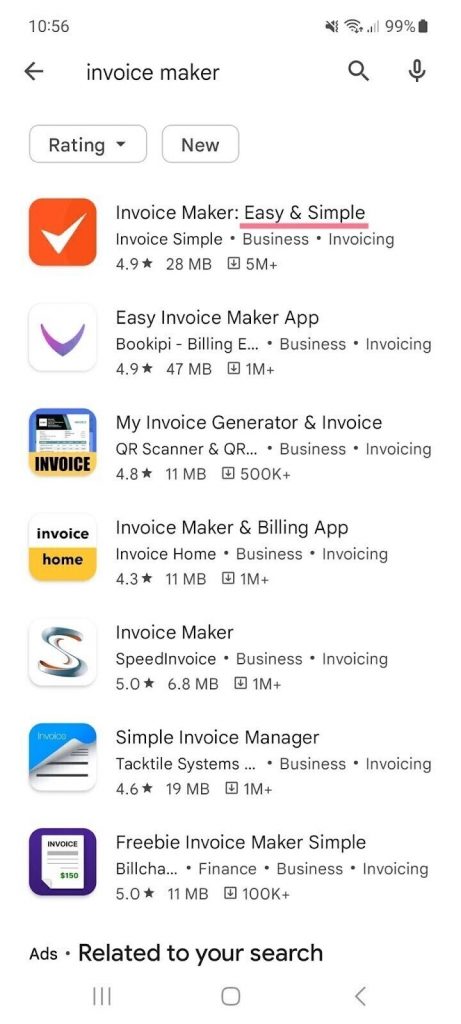
Additionally, you will need to continuously test various names, keywords, and combinations for your app until you identify the one that gets the most downloads.
Apple gives you the option to provide more context and details about your program in an additional subtitle section. There is also a 30-character limit in the subtitle box. Utilize this space to enhance your app’s description and make even more use of keywords.
2. Include Keywords (Only for Apple App Store)
You can input keywords that characterize your software and that you want to appear for in the app store’s results in a field provided by the Apple App Store. Apple will rank your app based on these keywords.
The maximum character count is 100, however you are free to input as many keywords as you like. Keywords must be separated by commas (avoid using spaces).
This is where you may get creative with your keyword research, just like with the name of your app.
It also gives you a place to regularly test various keyword combinations to see which ones perform best for your app.
3. Create Captivating App Description:
An effective ASO approach depends on the description fields in your app. Why? Because they give you a more flexible way to explain your application’s functionality.
App store ranking takes into account both the long (4,000 characters) and short (80 characters) description fields provided by Google Play.
The 4,000 character description box is the only one available in Apple’s App Store, and it doesn’t seem like ranking is done using it.
However, whether or not an app store will rank your application based on its description field(s), this feature is still significant because it influences how consumers view your application.
Therefore, the description box will also have an impact on the number of downloads for your app, which will have an impact on your ranking.
Give your app’s description a lot of thought and put some effort into it. Describe the product’s goals, salient characteristics, issues it resolves, and any other details that users should be aware of.
In order to improve the ranking of your app, try including keywords from your keyword research in your descriptions. The inclusion of keywords will, at minimum, reassure users that they have located the specific type of program they are searching for.
4. Include Engaging Visual Elements:
ASO isn’t only about getting more people to see your app and download it; it’s also about getting more exposure for you.
Downloads have an impact on your rating, so use text boxes and attractive pictures to entice consumers to install your app.
Both the App Store app page and the search results for the app include visual components like screenshots and videos. When a consumer clicks on your listing on Google Play, the graphic elements appear on the app store page.
Showcase your app’s functionality, features, problems it addresses, and benefits users will receive by using its visual components.

You can also use a video preview instead of static images. Users can see a preview of your app’s functionality through videos. Moreover, a visually appealing and engaging video can make you stand out from the crowd.
Although you should and can use creativity when designing your graphic elements, you must follow the rules set forth by both app stores:
Apple App Store:
- You can show up to ten visual elements.
- Though it’s preferable to use one truly excellent video, you can use three app previews (videos) that last between fifteen and thirty seconds.
- Videos can only be of in-app content.
- Utilize all ten spaces, being sure to adjust the image sizes for various devices.
- You can utilise text overlays, but make sure your material is evergreen.
Google Play:
- Pick eight images maximum, with one 30-second movie included.
- Include suitable screenshot sizes for each device.
- Your video needs to be on YouTube, with no ads or monetization.
- Your graphic elements must express the user experience.
5. Boost Ratings and Reviews:
Ratings and reviews give you information about how well-liked and successful your app is. You are less likely to rank highly in app store results if you have low ratings.
Encouraging users to leave reviews and ratings is a vital component of marketing applications for the app store. Especially when highly rated apps are deemed more relevant by both main shops.
The challenge is knowing when to ask users for this sort of input. You may receive low ratings if you question them about your app’s pain points or too frequently.
Here are some recommendations and principles for getting feedback and ratings for your app:
Seek Ratings and Reviews Following Positive Measures:
- Once a user has finished a level, written a post, or made a purchase, you can request a review. But be careful about how frequently you solicit reviews. You can only ask for a user’s rating three times a year on the App Store.
- Google Play is less strict when it comes to the constraints of its review prompts, but it is also less explicit about how frequently you can ask customers for reviews. Think of delaying prompting by at least a month or longer.
Promote Reviews on Various Platforms:
If you promote your app through email or social media, encourage customers to write reviews about their experiences there. These channels offer a more personal touch than an app pop-up box. And a lot of the time, your admirers are devoted followers who are delighted to give you a review.
Establish Alternative Channels for Negative Feedback:
When customers are dissatisfied with an app, they frequently submit negative ratings and reviews. Make up for this by offering a feedback or support chat where users may vent their concerns. By doing this, you’ll be able to resolve user issues without having your app store rating dropped.
Request Reviews and Ratings After Updates:
It’s a good idea to solicit feedback as soon as you’ve made significant app updates.
Consumers who are already familiar with your app might be thrilled with your updates, which would encourage them to provide favorable reviews. To make sure that the modifications benefit the user experience, just make sure you test them beforehand.
6. Improve Downloads:
The more downloads the application has, the more noticeable it will become. The search engines reward high-popularity apps in the app store. More downloads will result from improving your app’s exposure. This is how both app stores operate, therefore you should try to gain as many downloads as possible.
To do this, you must raise your conversion rate or the percentage of users who install your app after seeing its app store page.
In the App Store, the average conversion rate is only 31%, while on Google Play, it is 32.7%. This implies that even after clicking on to an app’s store page, two-thirds of users will not download it. Fortunately, you can track your conversion rate with conversion rate optimisation (CRO).
Fortunately, conversion rate optimisation (CRO) allows you to track and gradually enhance your app store page’s conversion rate.
The following changes could be made:
- Changes to your app’s title or name
- Multiple phrases and their combinations in the “Keywords” field (iOS)
- Improve the copy in your descriptions.
- Distinct app icons
- More intriguing or compelling visual components
- Various payment options for your application
- Try testing an unfamiliar component from the above list first, and then track your changes over a few days, or perhaps a month.
It will be evident to you that your changes were probably successful if your conversion rate increases within that time. You can go back to the previous iteration of the element if you see a decline in conversion rates.
Alternatively, experiment with a fresh version.
Do not forget to record your modifications and the resulting conversion rates in a log. It will then be simple to determine which adjustments were most effective.
To be certain of the variable that has (or hasn’t) affected your conversion rate, try to keep the number of things you modify with each update to a minimum.
7. Maintain Regular Updates:
Since the Apple App Store and Google Play both use app freshness and update frequency as ranking indicators, freshness is a crucial component of ASO.
This is due to the fact that both customers and app stores prefer to see programs that are always developing and getting better It doesn’t seem very attractive to use an app that was last updated five years ago, does it?
Updates provide you the chance to make improvements to your programme based on bug reports, user feedback, and new features.
To let people know about your changes, utilize the “What’s New in This Version?” part on Google Play or the “Release Notes” section in the App Store. Also emphasize on including important details and keywords that people might be looking for.
Consider updating your app once or twice every month, even if merely to fix problems.
8. Monitor Results and Continue Testing:
If you want ASO to be effective, you should keep testing various iterations of your app store elements and refine your findings.
You must comprehend which adjustments result in success in order to accomplish this.
Some significant insights may be gained from the data that app stores provide. Nevertheless, neither the App Store nor Google Play monitors the ranks of your application.
You can keep an eye on your keyword ranks, downloads, ratings, reviews, and even revenue with tools like Semrush’s Mobile App Insights.

Likewise, you may find and monitor the keywords that lead to the highest downloads of your programme. These kinds of metrics, along with those offered by the app stores, are quite helpful when deciding how best to implement your ASO approach.
Without hesitation, try experimenting with various titles, subtitles, descriptions, and keywords (on iOS). Also, experiment with alternative screenshot styles and movies to learn what causes good improvement.
Continue to adjust your plan of action to observe what yields the desired outcomes. Just remember to keep track of any modifications you make. You can therefore always go back to an earlier version if the outcomes aren’t what you intended.
